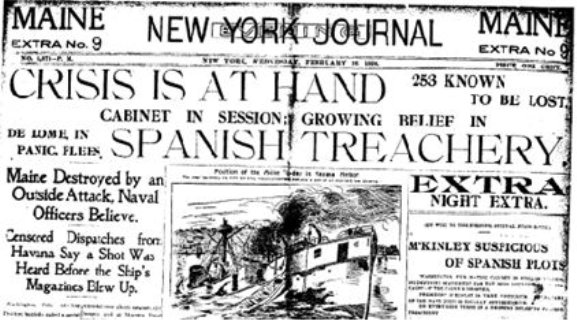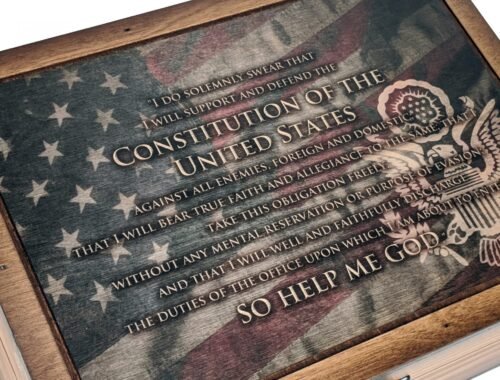
Power Shift, Part 4: The Spanish-American War, the American Empire, and Progressivism
Abstract: The Spanish-American War is perhaps the least understood, crucial events in American History. It ushered in an era of the American Empire that build upon the previous westward expansion of the US. Empires need money and power.
The US victory in the Spanish-American War brought it several overseas Spanish colonies and allowed the US to annex Hawaii. This ushered in an age of empire and led to the assassination of one president (McKinley) and the rise of a second president, Theodore Roosevelt. A third president, Woodrow Wilson, cast an imposing shadow as well, although his role in the transfer of power from the states to the federal government started before he became president. The empire sentiment built upon the expansion of the US from the Louisiana Purchase and the Mexican-American War, as well as the Indian Wars. America was ripe for empire and optimistic after these events. But perhaps it forgot about some of its founding principles.
As noted in part 1 of this series, this period was a critical inflection point in the transfer of power. Key drivers of change include:
- The transformation of the federal bureaucracy
- Progressivism and the exertion of federal power
- 2 critical Constitution amendments that changed the balance of power between the states and the federal government
Woodrow Wilson and the Bureaucracy
Wilson is perhaps best known for his 14 Point Peace Plan after WWI and the League of Nations. But his most lasting and significant impact on the US was the transformation of the federal bureaucracy based on the precepts of Scientific Management (see Frederick Taylor and others). While the motives and the intentions of the reform were solid, he essentially created an unelected fourth branch of government that is largely unaccountable to the electorate. While federal bureaucrats can fired, the process, especially with the advent of the Civil Rights Era, can be difficult. They also create and manage federal programs that can be even more difficult to terminate, even if they achieve their desired outcomes. A century plus later, we are still affected by this tremendous change in the federal government. It, combined with the Constitutional changes discussed below, significantly increased the power and control of the federal government.
Progressivism and Federal Power
President Theodore Roosevelt did two things of marked significance. First, as a conservationist, he used the power of the new bureaucracy and his inherent powers as president to create wildlife reserves and federal parks. While a fine and laudable objective, it created federal sites on state land and set the precedent for increasing federal programs and encroachment on the states. Second, he used federal law successfully to bust trusts and large monopolies that he deemed antithetical to the public good. While Congress passed the Sherman Anti-Trust Act (1890) years before Roosevelt, it was little used and ineffective. Roosevelt’s dynamism and energy brought life to the act. His trust busting set the stage for larger federal regulation and oversight. His Square Deal, while effective, set the stage for Franklin Roosevelt’s New Deal.
Constitutional Changes
The rise of the American empire and progressivism meant the federal government needed money and greater control. The 16th and 17th Amendments to the Constitution facilitated that goal. The 16th Amendment allowed for a federal income tax and gave Congress the power to spend these new revenues any way it wished without the prior Constitutional handcuffs. As part of this effort, Congress created the IRS to manage the new taxation. The 17th Amendment fundamentally changed Congress. Prior to the amendment, states appointed senators, and they represented the states in the Senate. Therefore, the Senate was a forum for the states to exert control over the federal government. The 17th Amendment took that control away from the states and changed senators to popularly elected representatives. This effectively made the Senate a body more reflective of federal power than state power.
AMENDMENT XVI – Passed by Congress July 2, 1909. Ratified February 3, 1913.
Note: Article I, section 9, of the Constitution was modified by amendment 16.
The Congress shall have power to lay and collect taxes on incomes, from whatever source derived, without apportionment among the several States, and without regard to any census or enumeration.
AMENDMENT XVII – Passed by Congress May 13, 1912. Ratified April 8, 1913.
Note: Article I, section 3, of the Constitution was modified by the 17th amendment.
The Senate of the United States shall be composed of two Senators from each State, elected by the people thereof, for six years; and each Senator shall have one vote. The electors in each State shall have the qualifications requisite for electors of the most numerous branch of the State legislatures.
When vacancies happen in the representation of any State in the Senate, the executive authority of such State shall issue writs of election to fill such vacancies: Provided, That the legislature of any State may empower the executive thereof to make temporary appointments until the people fill the vacancies by election as the legislature may direct.
This amendment shall not be so construed as to affect the election or term of any Senator chosen before it becomes valid as part of the Constitution.
The net effect of these changes continued to increase federal power at the expense of the states and provided the precedence and the means to expand federal power to fund and control and empire and to become a great power in the world. None of these changes were essentially bad. They all happened for good reasons. But power is amoral. The same power can be used for good objectives as it can be used for less benign objectives. That is why there needs to be the foresight and controls in place as discussed in Part 4: Policy Development of the series on policy, judgment and cognition.
Series Outline
Part 1: Overview of the Inflection Points
Part 2: Judicial Review
Part 3: The Civil War
Part 4: The Spanish-American War, the American Empire, and Progressivism
Part 5: The New Deal
Part 6: World War II
Part 7: The Great Society
Part 8: Concluding Thoughts





